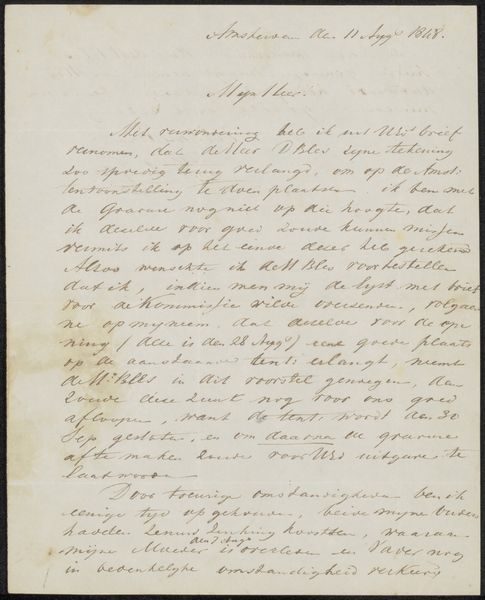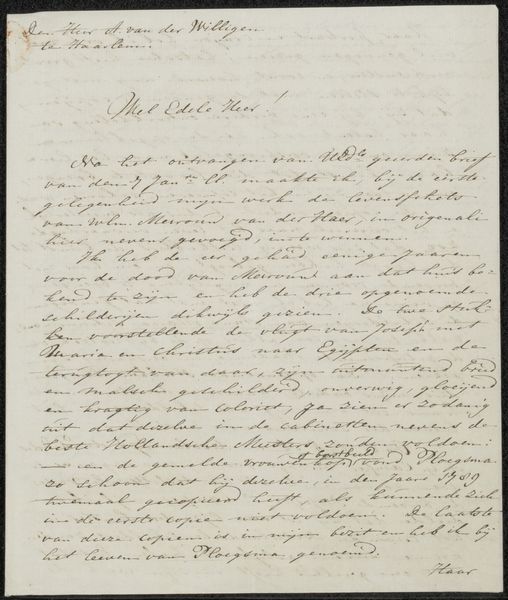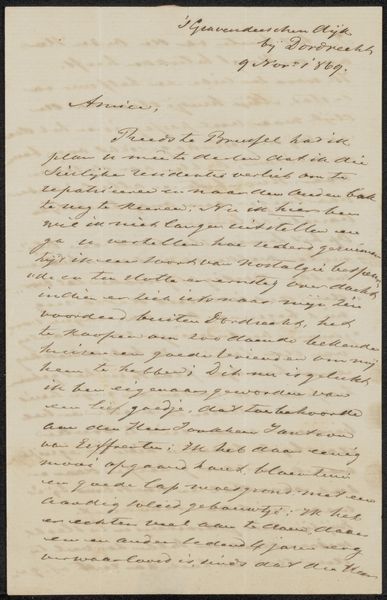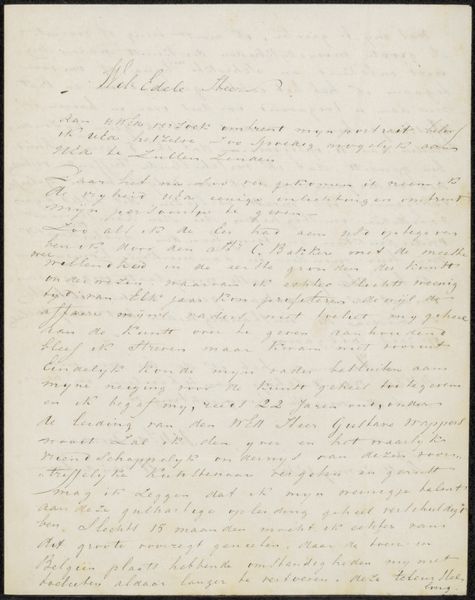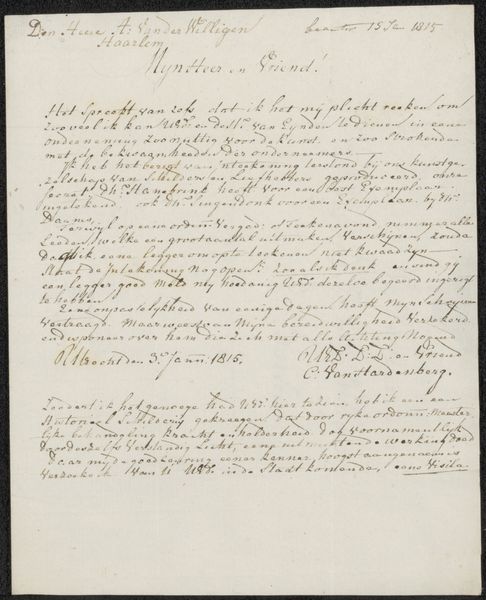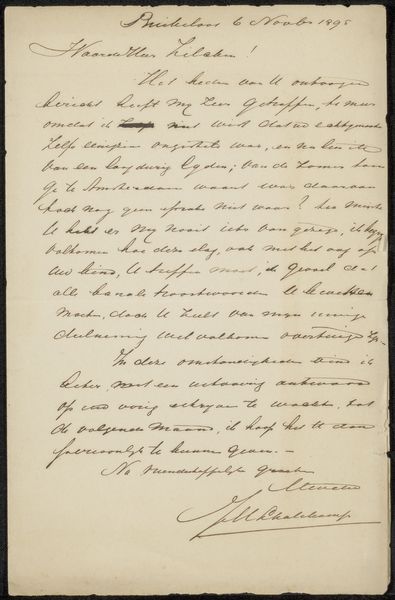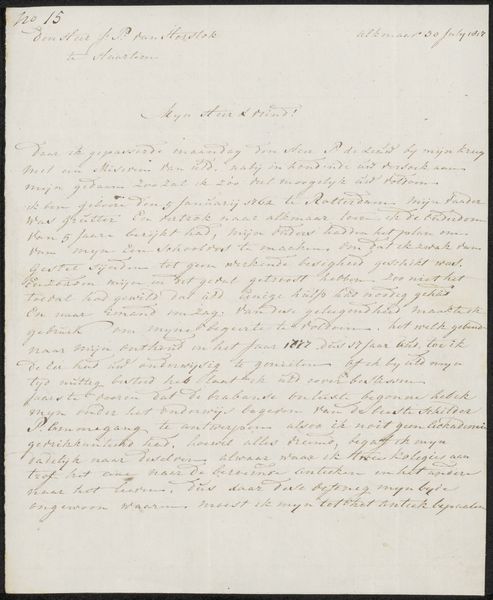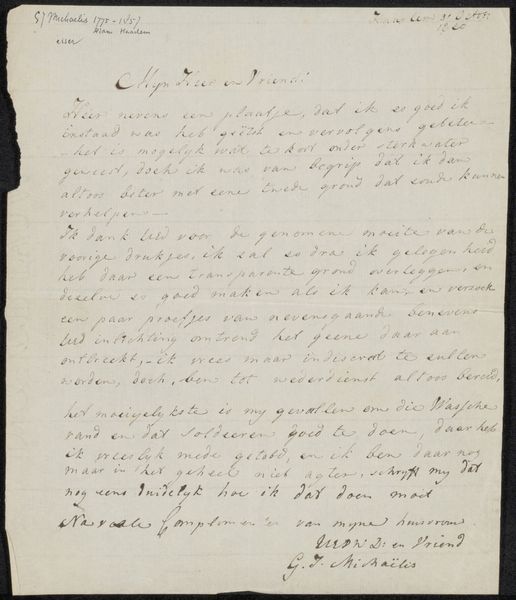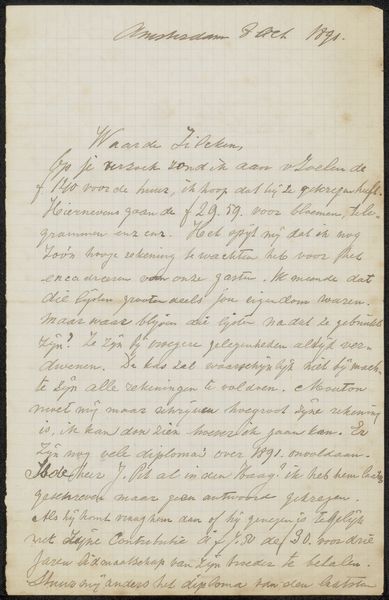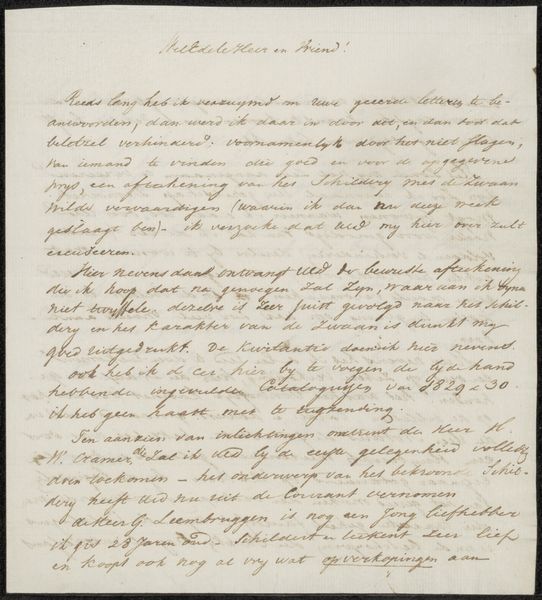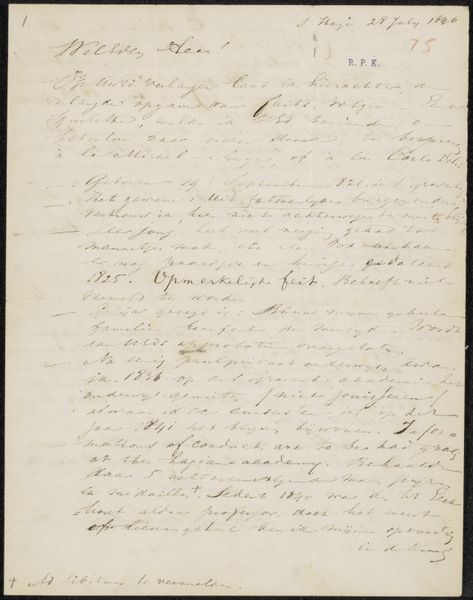
drawing, paper, ink
#
drawing
#
paper
#
ink
Copyright: Rijks Museum: Open Domain
This letter was penned by J.W. van Musschenbroek in Utrecht, in 1825, to Johannes Tiberius Bodel Nijenhuis. The dominant symbol is the written word itself, which, within this context, conveys a message of great importance to the recipient. Letters in the early modern era served as vital links between individuals, families, and communities, especially when distance or circumstance prevented face-to-face interaction. The act of writing itself becomes a symbol of connection, care, and commitment. Consider the evolution of the letter through history, from ancient scrolls to digital emails. Each form carries its own weight of expectation and meaning, influencing how messages are conveyed and received. The personal, handwritten nature of this letter provides a unique glimpse into the mind of the sender, laden with conscious and unconscious intentions. The formation of words, the rhythm of sentences—they all contribute to the emotional and psychological impact of the message. Like any other symbol, letters have resurfaced, evolved, and taken on new meanings in different historical contexts.
Comments
No comments
Be the first to comment and join the conversation on the ultimate creative platform.
